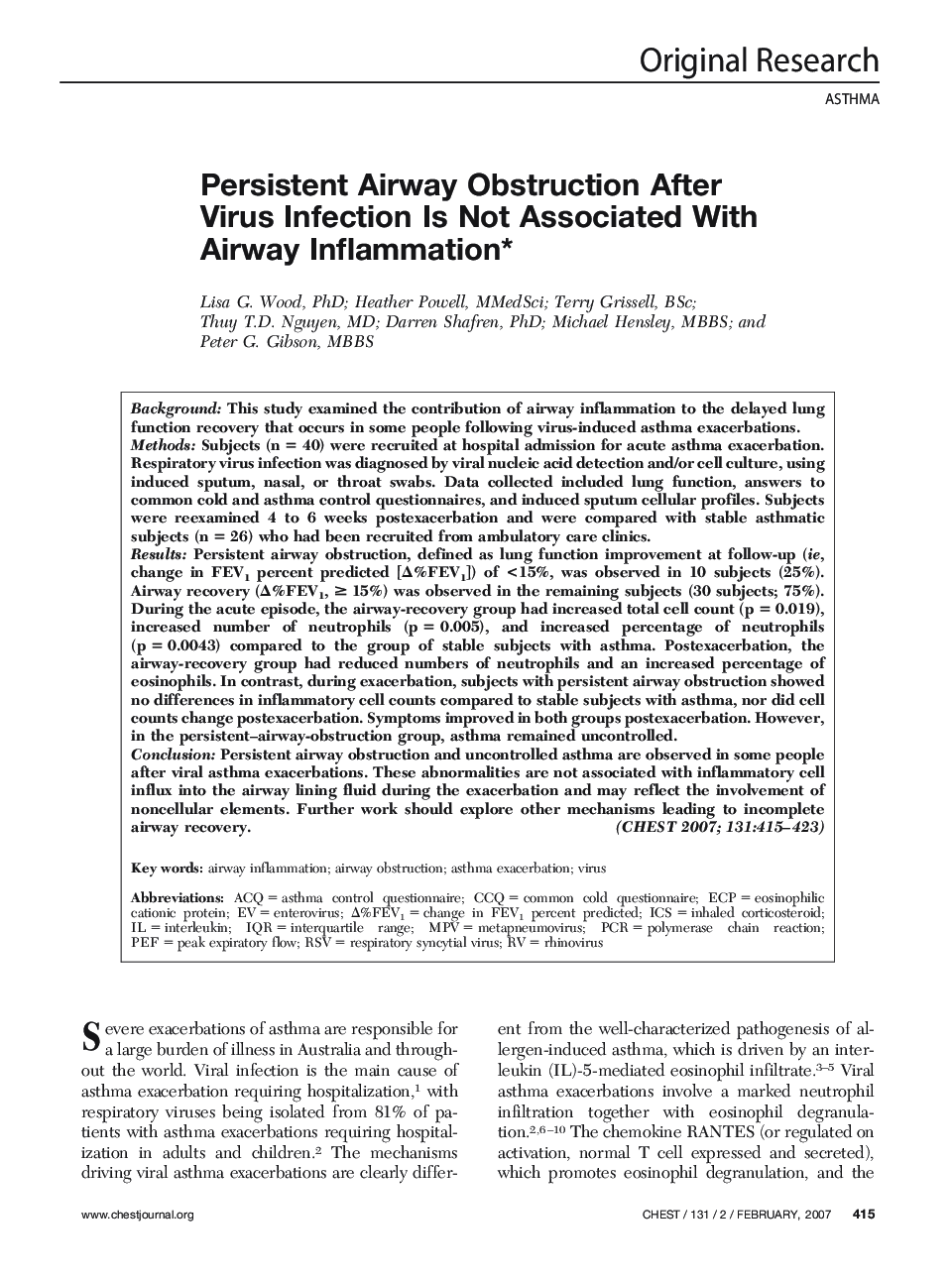| Article ID | Journal | Published Year | Pages | File Type |
|---|---|---|---|---|
| 2906571 | Chest | 2007 | 9 Pages |
Background:This study examined the contribution of airway inflammation to the delayed lung function recovery that occurs in some people following virus-induced asthma exacerbations.Methods:Subjects (n = 40) were recruited at hospital admission for acute asthma exacerbation. Respiratory virus infection was diagnosed by viral nucleic acid detection and/or cell culture, using induced sputum, nasal, or throat swabs. Data collected included lung function, answers to common cold and asthma control questionnaires, and induced sputum cellular profiles. Subjects were reexamined 4 to 6 weeks postexacerbation and were compared with stable asthmatic subjects (n = 26) who had been recruited from ambulatory care clinics.Results:Persistent airway obstruction, defined as lung function improvement at follow-up (ie, change in FEV1percent predicted [Δ%FEV1]) of <15%, was observed in 10 subjects (25%). Airway recovery (Δ%FEV1, ≥ 15%) was observed in the remaining subjects (30 subjects; 75%). During the acute episode, the airway-recovery group had increased total cell count (p = 0.019), increased number of neutrophils (p = 0.005), and increased percentage of neutrophils (p = 0.0043) compared to the group of stable subjects with asthma. Postexacerbation, the airway-recovery group had reduced numbers of neutrophils and an increased percentage of eosinophils. In contrast, during exacerbation, subjects with persistent airway obstruction showed no differences in inflammatory cell counts compared to stable subjects with asthma, nor did cell counts change postexacerbation. Symptoms improved in both groups postexacerbation. However, in the persistent-airway-obstruction group, asthma remained uncontrolled.Conclusion:Persistent airway obstruction and uncontrolled asthma are observed in some people after viral asthma exacerbations. These abnormalities are not associated with inflammatory cell influx into the airway lining fluid during the exacerbation and may reflect the involvement of noncellular elements. Further work should explore other mechanisms leading to incomplete airway recovery.
